Abstract
A very careful enquiry within adequate sub-samples of the general population of a market town and its surrounding villages has revealed (a) no special relationship between so-called tension headaches and migraine as defined; (b) a two-year prevalence of migraine more or less similar to that reported elsewhere, i.e. approximately 10% of males and 25% of females being affected; (c) a greater prevalence of migraine amongst professional and managerial classes; (d) similar clinical features to those commonly described before; (e) that approximately 50% of the subjects had consulted their general practitioners and/or other doctors on account of the headache; (f) that actual migraine female subjects are significantly more anxious and depressed than normal subjects whilst at the same time reporting themselves as more sociable than others; they also complain more of other functional somatic disturbance; (g) that such differences were not always detected in the smaller male sample who showed similar tendencies only in respect of anxiety and other somatic complaint; (h) that subjects who described themselves on the questionnaire as having migraine but who were not on careful scrutiny always found to have it, showed as a population a higher degree of neurotic disability, including phobic avoidance patterns, than the population who actually have the condition.
This study supports the view that migraine is associated with certain psychological characteristics, especially amongst females. The profile is that of undefended dysphoria coupled with a definite tendency to be outgoing and engaging in the world. The price is migraine and other somatic complaint.
Full text
PDF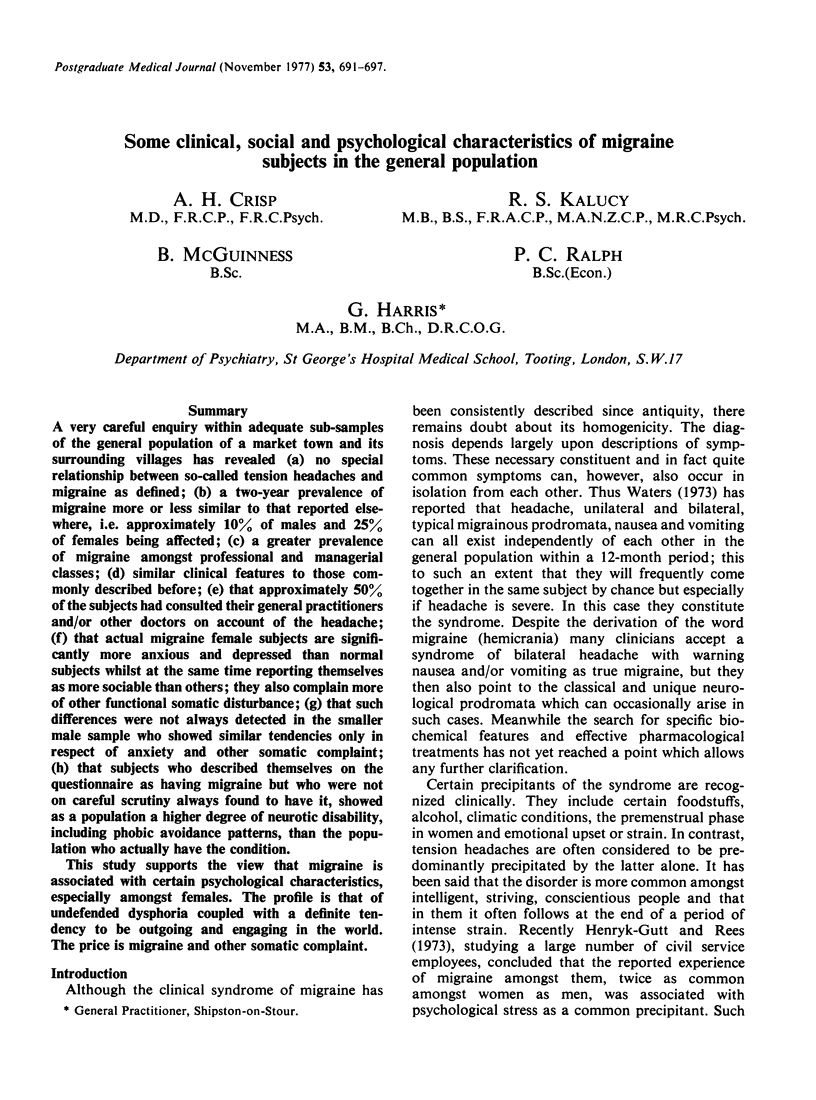
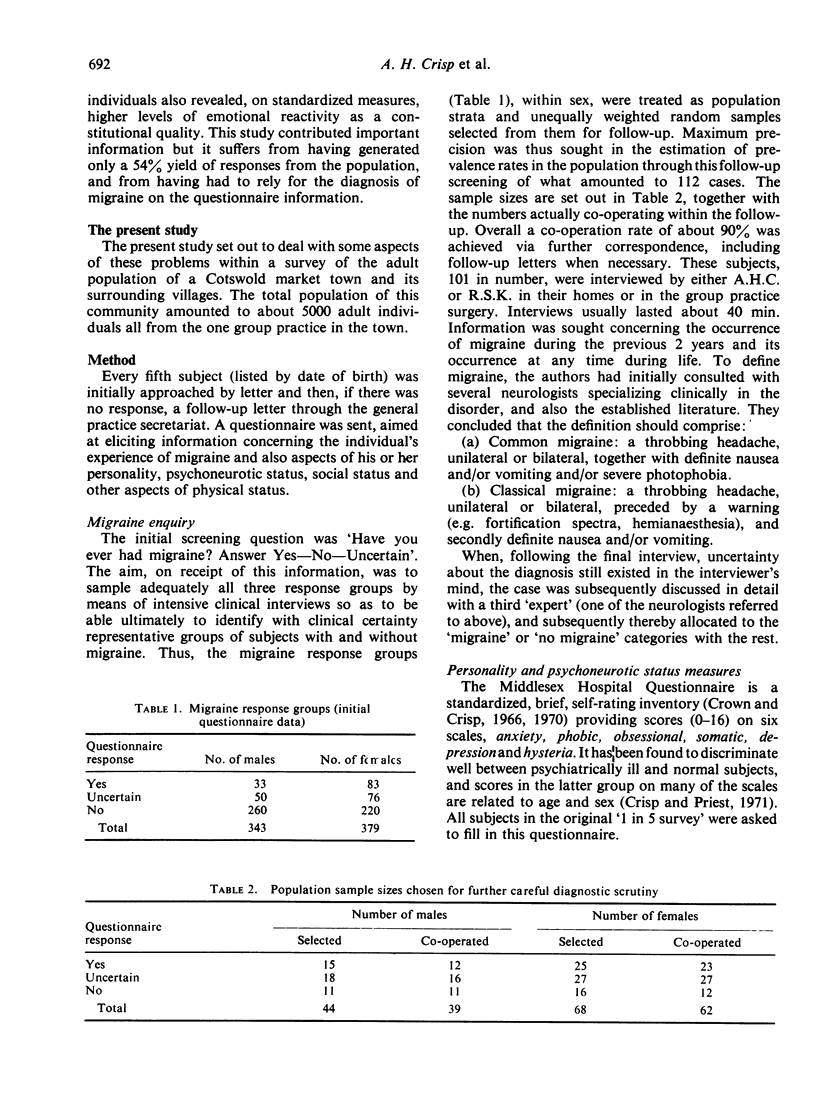
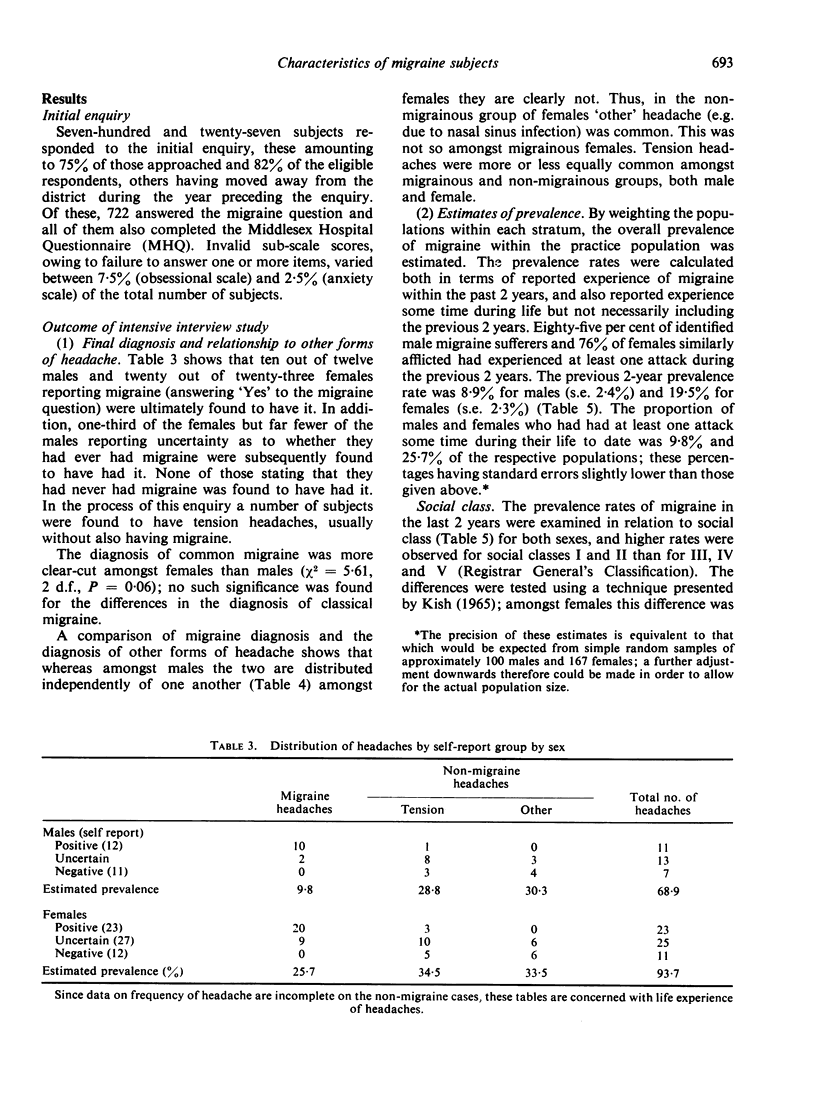
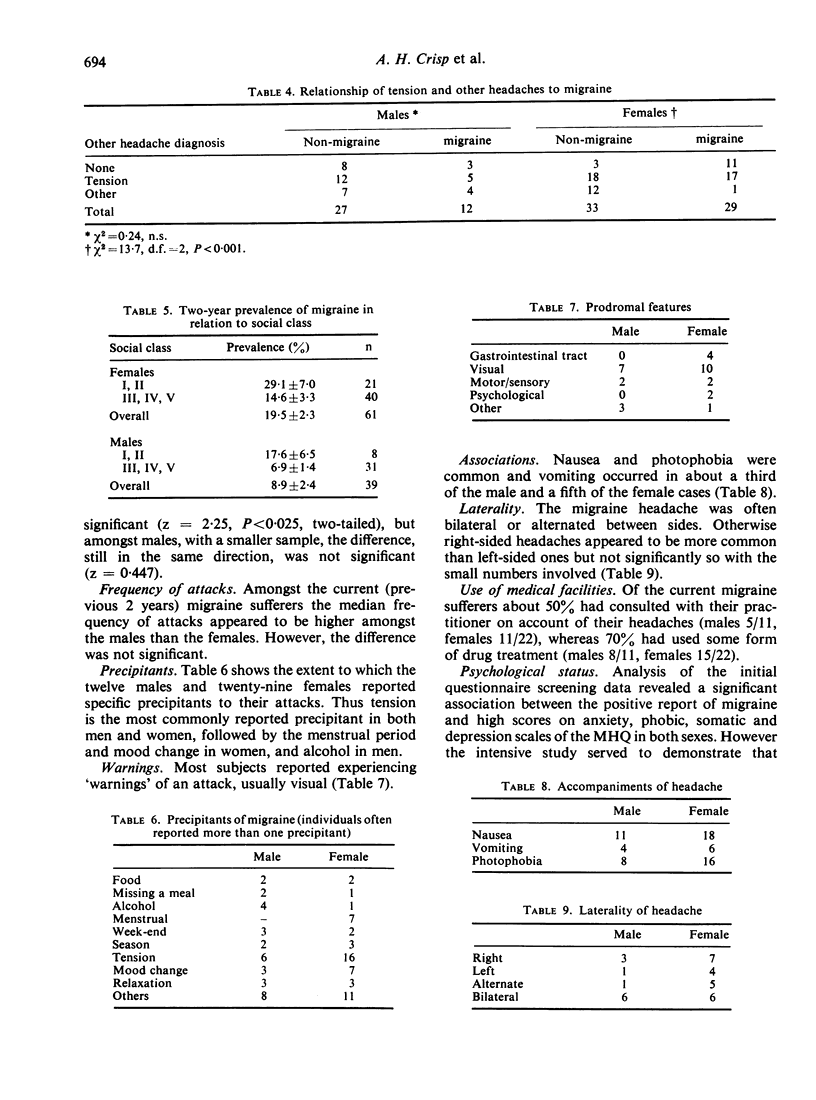
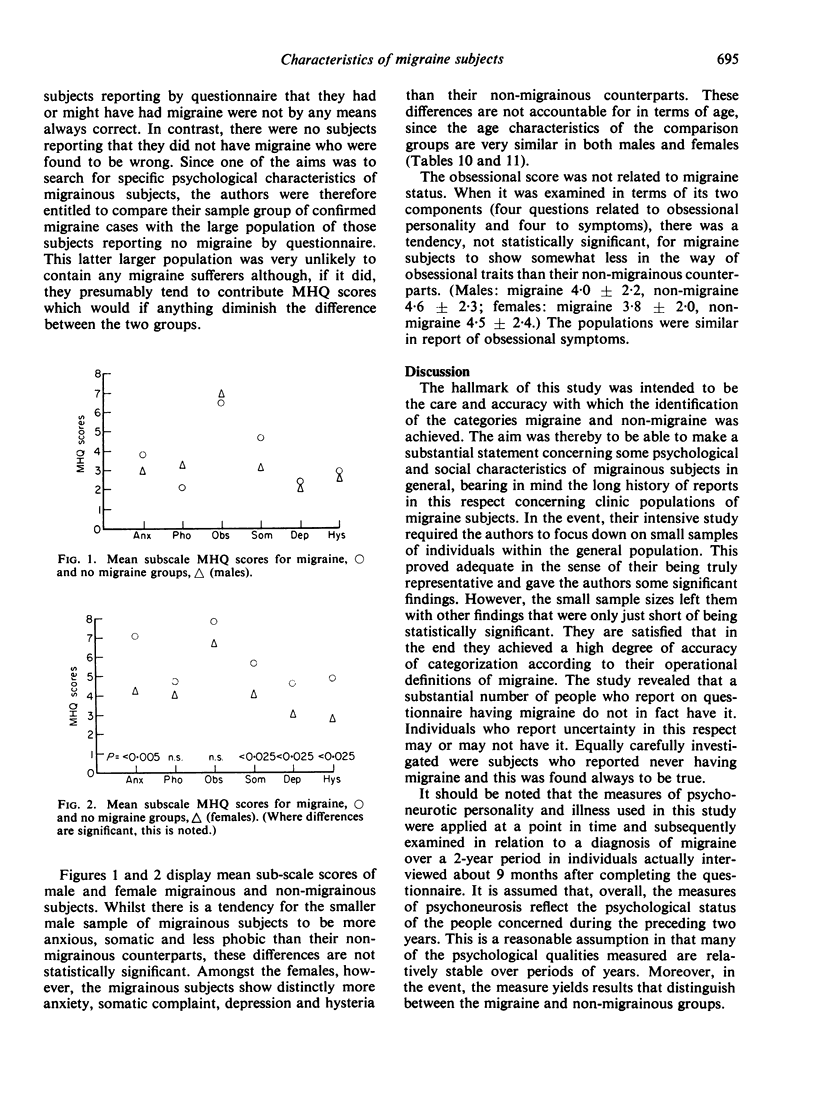
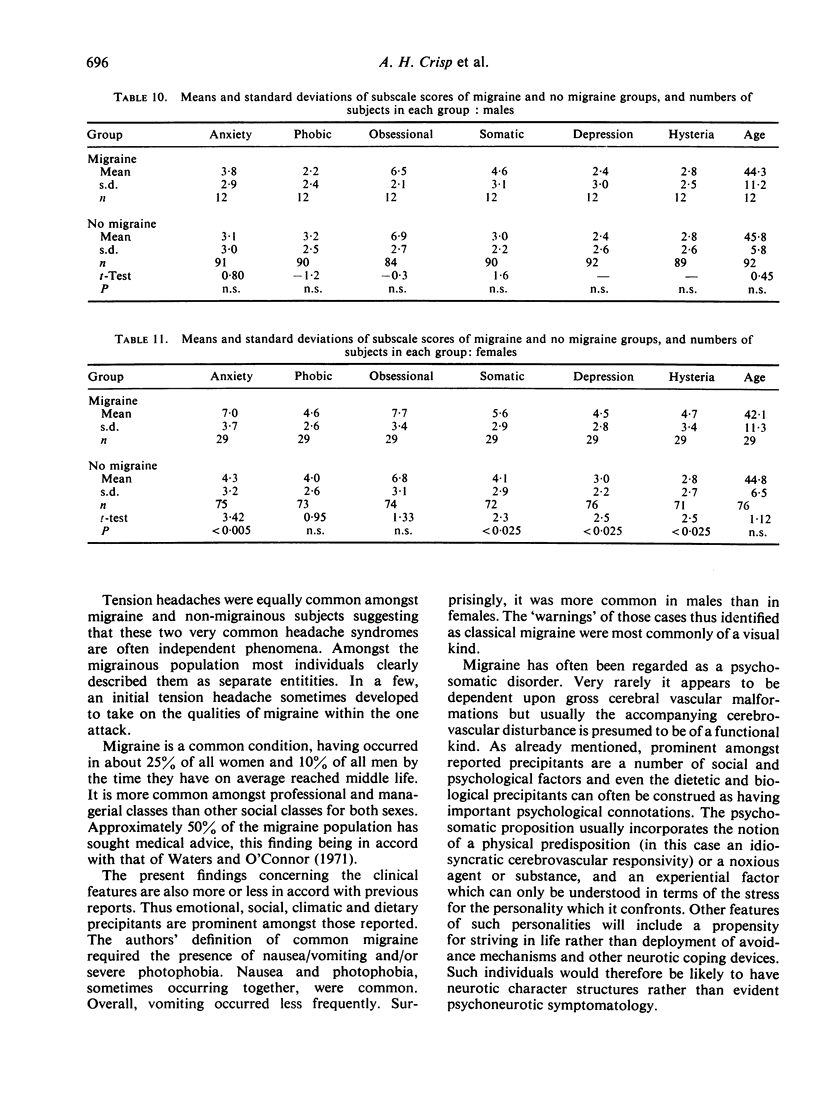
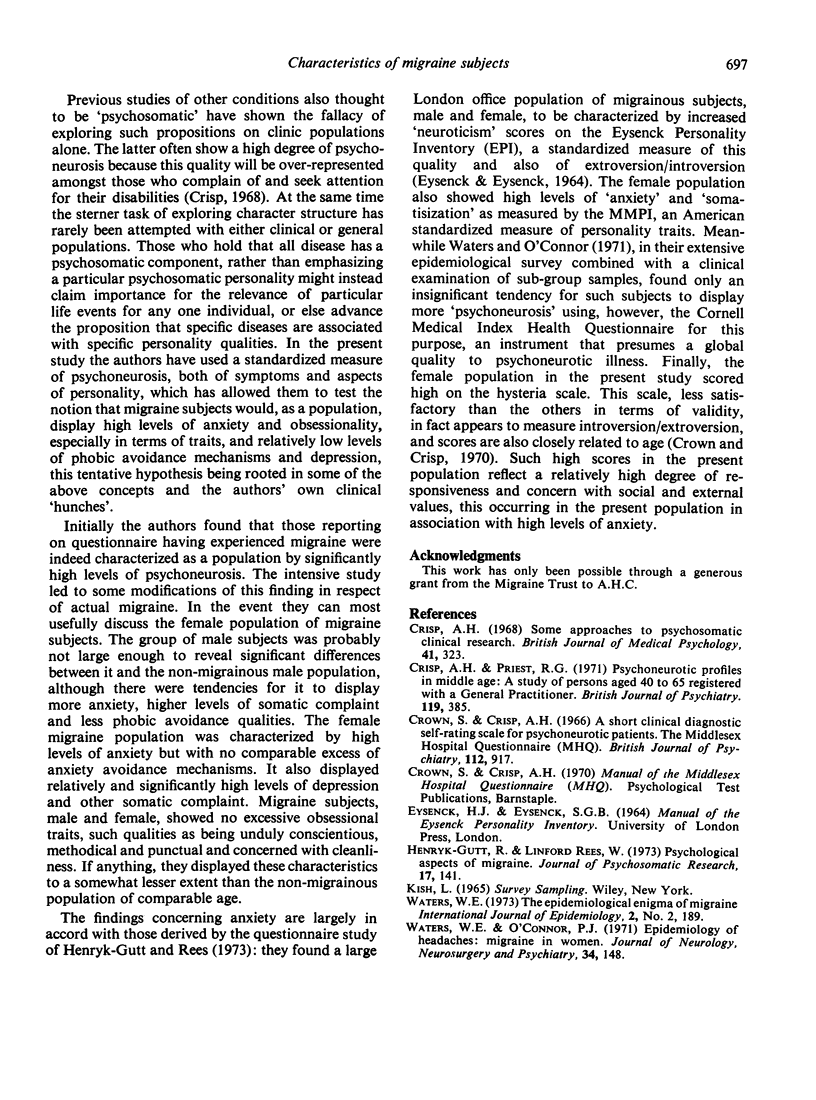
Selected References
These references are in PubMed. This may not be the complete list of references from this article.
- Crisp A. H., Priest R. G. Psychoneurotic profiles in middle age. A study of persons aged 40 to 65 registered with a general practitioner. Br J Psychiatry. 1971 Oct;119(551):385–392. doi: 10.1192/bjp.119.551.385. [DOI] [PubMed] [Google Scholar]
- Crisp A. H. Some approaches to psychosomatic clinical research. Br J Med Psychol. 1968 Dec;41(4):323–341. doi: 10.1111/j.2044-8341.1968.tb02041.x. [DOI] [PubMed] [Google Scholar]
- Crown S., Crisp A. H. A short clinical diagnostic self-rating scale for psychoneurotic patients. The Middlesex Hospital Questionnaire (M.H.Q.). Br J Psychiatry. 1966 Sep;112(490):917–923. doi: 10.1192/bjp.112.490.917. [DOI] [PubMed] [Google Scholar]
- Henryk-Gutt R., Rees W. L. Psychological aspects of migraine. J Psychosom Res. 1973 Mar;17(2):141–153. doi: 10.1016/0022-3999(73)90015-9. [DOI] [PubMed] [Google Scholar]
- Waters W. E., O'Connor P. J. Epidemiology of headache and migraine in women. J Neurol Neurosurg Psychiatry. 1971 Apr;34(2):148–153. doi: 10.1136/jnnp.34.2.148. [DOI] [PMC free article] [PubMed] [Google Scholar]
- Waters W. E. The epidemiological enigma of migraine. Int J Epidemiol. 1973 Summer;2(2):189–194. doi: 10.1093/ije/2.2.189. [DOI] [PubMed] [Google Scholar]


